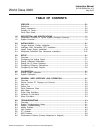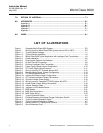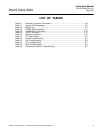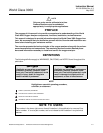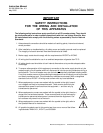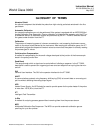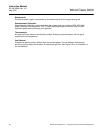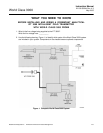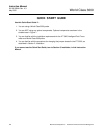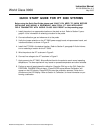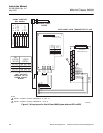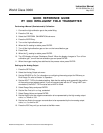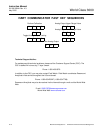
Instruction Manual
IB-106-300NH Rev. 4.3
May 2005
Rosemount Analytical Inc. A Division of Emerson Process Management P-3
World Class 3000
GLOSSARY OF TERMS
Abrasive Shield
An optional component that shields the probe from high velocity particulate entrained in the flue
gas stream.
Automatic Calibration
An automatic calibration can only be performed if the system is equipped with an MPS 3000 Mul-
tiprobe Calibration Gas Sequencer. Once a calibration is initiated by the operator or by the IFT on
a scheduled interval, all calibration actions are performed by the IFT. The MPS switched calibra-
tion gases under direction from the IFT.
Calibration
The process of measuring gases of a known concentration, and comparing that known concen-
tration to the actual values sensed by the instrument. After reading the calibration gases, the IFT
automatically adjusts the slope and constant values to ensure that the system is correctly reading
the process gas O
2
values.
Cold Junction Compensation
A method for compensating for the small voltage developed at the junction of the thermocouple
leads in the probe junction box.
Dead Band
The range through which a signal can be varied without initiating a response. In the IFT 3000,
dead band is used to prevent an oxygen signal near an alarm setpoint from cycling the alarm on
and off.
GUI
General User Interface. The GUI is the operator interface for the IFT 3000.
HART
A communications protocol using frequency shift keying (FSK) to transmit data on an analog out-
put line without affecting the analog output signal.
HPS
Heater Power Supply. An HPS should be used to provide power for the probe heater if the probe
is more than 150 ft (45 m) from the IFT.
IFT
Intelligent Field Transmitter.
In Situ
A method of analyzing process gases without removing them from the process stream.
MPS
Multiprobe Calibration Gas Sequencer. The MPS can provide automatic calibration gas se-
quencing for up to four probes.





